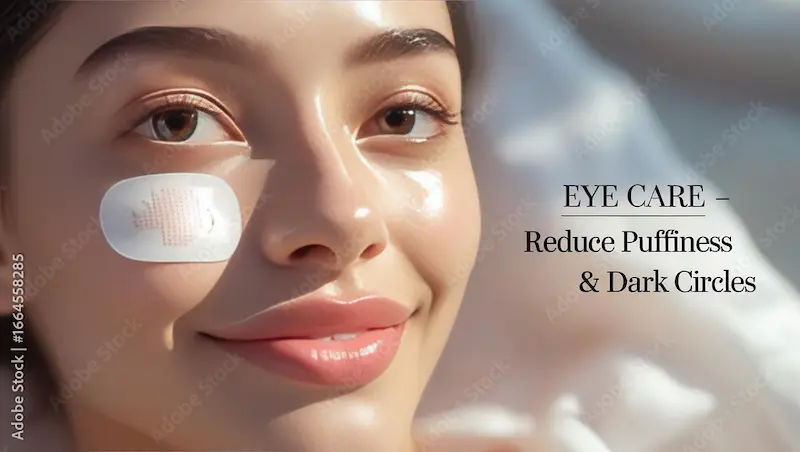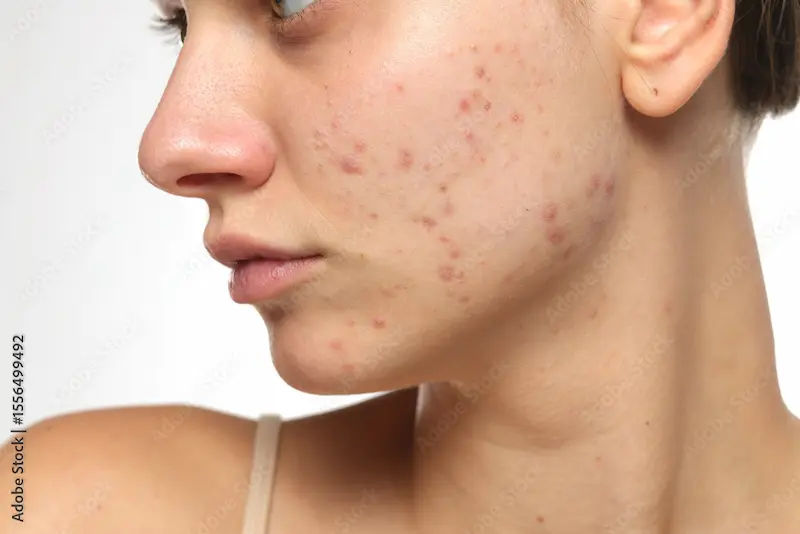Guide to 6 Common Skin Conditions In Winter And Their Prevention
Learn about the 6 most common winter skin conditions, their causes, and effective prevention tips to keep your skin healthy, hydrated, and comfortable throughout the cold season.

Written by Dr. Siri Nallapu
Reviewed by Dr. Shaik Abdul Kalam MD (Physician)
Last updated on 3rd Oct, 2025

Introduction: Why Winter Wreaks Havoc on Your Skin
As the temperature drops and the air turns crisp, you might notice your skin sending out an SOS. Winter isn't just about cozy sweaters and hot cocoa; it's a season that poses a significant challenge to our largest organ—our skin. The combination of cold outdoor air and dry, heated indoor environments strips away the skin's natural moisture, leading to a host of uncomfortable common skin conditions. This dryness can compromise the skin's protective barrier, making it more susceptible to irritation, itching, and flare-ups of pre-existing issues like eczema or psoriasis. But enduring months of discomfort isn't inevitable. This comprehensive guide will walk you through the six most common skin issues that arise during the colder months, helping you identify what you're dealing with and, most importantly, how to prevent and manage them effectively. By understanding the causes and implementing a proactive skincare strategy, you can help your skin stay healthy, comfortable, and resilient all winter long.
1. Winter Xerosis (Extremely Dry Skin)
Winter xerosis is the medical term for the severe dryness that many people experience. It's more than just a bit of tightness; it's a significant lack of moisture in the outer layer of the skin (the stratum corneum).
What it Feels and Looks Like
Skin affected by winter xerosis often feels rough, tight, and may appear flaky or ashy, especially on arms and legs. In more severe cases, you might see redness, fine cracks, and experience itching. It's the most common skin complaint during this season.
Primary Causes in Cold Weather
The main culprits are low humidity levels both outdoors and indoors. Cold air holds less moisture, and when we crank up the indoor heating, it further depletes the air of humidity. This dry air acts like a sponge, pulling water from your skin. Frequent hand washing with harsh soaps and hot showers exacerbate the problem.
Prevention and Management Strategies
The key is to replenish moisture and lock it in. How to prevent dry skin in winter starts with switching to a gentle, fragrance-free cleanser. Immediately after bathing, pat your skin dry and apply a thick, cream-based moisturiser containing ingredients like ceramides, hyaluronic acid, or petroleum jelly. This "soak and seal" method is highly effective.
Consult a Dermatologist for the best advice
2. Chapped Lips (Cheilitis)
Our lips are particularly vulnerable because they have a very thin outer layer and no oil glands to keep them naturally lubricated.
Beyond Basic Dryness
Chapped lips can progress from simple dryness to painful cracking, peeling, and even bleeding. This condition is known as cheilitis.
The Licking Trap and Other Irritants
It's a natural instinct to lick dry lips, but saliva evaporates quickly, taking with it even more moisture and leaving lips drier than before. Other irritants include breathing through your mouth in the cold and the wind.
Healing and Protecting Your Lips
Avoid matte or long-wear lipsticks that can be drying. Instead, use a bland, emollient lip balm with ingredients like beeswax, shea butter, or petrolatum. Reapply frequently throughout the day, especially before going outside. Exfoliating flaky skin gently with a soft toothbrush can help, but only if the lips aren't cracked or bleeding.
3. Eczema (Atopic Dermatitis) Flare-Ups
For the over 30 million Americans with eczema, winter can be a particularly difficult time. Eczema is a chronic condition involving inflammation and a damaged skin barrier.
Why Winter is a Trigger
The dry winter air is a primary trigger, leading to increased water loss from the skin. This dryness causes itching, and scratching further damages the skin barrier, creating a vicious cycle of inflammation and flare-ups.
Identifying an Eczema Flare vs. General Dryness
While dry skin is flaky and rough, an eczema flare is characterised by intense itching, red or brownish-gray patches, small raised bumps that may leak fluid when scratched, and thickened, cracked skin. It often appears in the creases of the elbows and knees.
Soothing the Itch and Preventing Flares
A consistent moisturising routine is non-negotiable. Look for the best moisturiser for eczema in cold weather, which are often ointments or creams labeled "for sensitive skin." Taking shorter, lukewarm showers is crucial. Wear soft, breathable fabrics like cotton instead of wool directly against the skin. If your eczema flare is severe, covers a large area, or shows signs of infection, it's important to consult a dermatologist. You can book an online consultation with a skin specialist on Apollo24|7 to discuss prescription treatments.
4. Winter Itch (Pruritus Hiemalis)
This is a specific condition characterised by an overall itchiness without a visible rash, typically affecting the legs, arms, and abdomen.
The Distinct Feeling of Winter Itch
It’s that maddening, generalised itch that seems to have no source. The skin may look perfectly normal or slightly dry, but the urge to scratch is persistent. This is a key reason why skin itches more in winter.
The Role of Hot Showers
A long, hot shower might feel wonderful on a cold day, but it is one of the worst things for winter itching. Hot water strips the skin of its natural oils, exacerbating dryness and itching.
Calming the Constant Need to Scratch
The solution lies in combating dryness. Keep showers short and use lukewarm water. Apply a moisturiser immediately afterward. Using a humidifier in your bedroom at night can add necessary moisture to the air. If the itch is unbearable, a cool compress can provide temporary relief without damaging the skin.
5. Psoriasis and Cold Weather
Psoriasis is an autoimmune condition that causes skin cells to multiply too quickly, leading to the buildup of thick, scaly, silvery plaques, often on the elbows, knees, and scalp.
How Lack of Sunlight Affects Psoriasis
Many people with psoriasis find their symptoms improve in the summer due to controlled exposure to ultraviolet (UV) light from the sun. Winter brings less sunlight, which can contribute to a psoriasis flare-up in cold months. Additionally, the dry air can make the plaques feel tighter and more uncomfortable.
Managing Symptoms When Temperatures Drop
It's essential to moisturise diligently to soften plaques. Continue with any prescribed treatments from your doctor. While natural sunlight is scarce, some dermatologists may recommend phototherapy (light therapy) during winter. If your psoriasis worsens significantly, a doctor from Apollo24|7 can help adjust your management plan, which may include topical treatments or other therapies.
6. Cold Urticaria (Cold-Induced Hives)
This is a less common but important condition—an allergic reaction to cold exposure.
An Allergic Reaction to Cold
When skin is exposed to a sudden drop in temperature, it reacts by breaking out in hives (welts) at the site of exposure. This can happen after holding a cold drink, swimming in cold water, or walking outside on a windy day.
Symptoms and Triggers
Cold urticaria symptoms include reddish, itchy welts, a burning sensation, and swelling. In severe cases, a whole-body reaction (anaphylaxis) can occur, which is a medical emergency.
Precautions for Sensitive Individuals
Management involves strict avoidance of sudden cold exposure. Dressing in layers, covering all exposed skin, and avoiding icy drinks are key. If you suspect you have cold urticaria, it is vital to see a doctor or allergist for a proper diagnosis, which can be confirmed with a simple ice cube test.
Proactive Prevention: Your Daily Winter Skin Care Routine
An ounce of prevention is worth a pound of cure, especially for your skin.
The "Soak and Seal" Method
This is the gold standard. Soak in a lukewarm bath or take a short shower for 5-10 minutes to hydrate the skin. Gently pat dry, leaving the skin slightly damp. Within 3 minutes, "seal" in that moisture by applying a thick ointment or cream.
Humidifier: Your Secret Weapon
A cool-mist humidifier in your main living area and bedroom can counteract the drying effects of indoor heating, adding essential moisture back into the air. Aim for an indoor humidity level between 30-50%.
Diet and Hydration for Skin Health
Drink plenty of water and incorporate foods rich in omega-3 fatty acids (like salmon, walnuts, and flaxseeds) and antioxidants (like berries and leafy greens) to support your skin's health from the inside out.
Conclusion: Embrace Winter with Healthy, Happy Skin
Winter's chill doesn't have to mean months of skin discomfort. By understanding the common skin conditions that arise—from simple dryness and chapped lips to more complex flare-ups of eczema and psoriasis—you are empowered to take proactive steps. The cornerstone of winter skin care is a consistent, gentle routine focused on hydration and protection. Remember to moisturise diligently, modify your bathing habits, use a humidifier, and dress appropriately for the weather. Your skin is a resilient organ, and with the right care, it can remain healthy and comfortable throughout the season. If you've tried these methods and your skin condition does not improve, or if you're dealing with a persistent issue, don't hesitate to seek professional guidance. You can easily consult a dermatologist online with Apollo24|7 for personalised advice and treatment options.
Consult a Dermatologist for the best advice
Consult a Dermatologist for the best advice

Dr. S Madhuri
Dermatologist
10 Years • MBBS, MD. DVL, DNB, Fellow (Dermatosurgery & Lasers)
Secunderabad
Apollo Hospitals Secunderabad, Secunderabad
(325+ Patients)

Dr. Asad Ansari
Dermatologist
14 Years • MBBS, DDVL
Kolkata
MCR SUPER SPECIALITY POLY CLINIC & PATHOLOGY, Kolkata

Dr. Sushil Singh
Dermatologist
6 Years • MBBS, MD Dermatology, Venerology & Leprosy
Kolkata
MCR SUPER SPECIALITY POLY CLINIC & PATHOLOGY, Kolkata

Dr. Benugopal Mohapatra
Dermatologist
10 Years • MBBS, DNB (DVL)
Barasat
Diab-Eat-Ease, Barasat

Dr. Kaushiki Hajra
Dermatologist
5 Years • MBBS, MD Dermatology, Venerology & Leprosy
Kolkata
MCR SUPER SPECIALITY POLY CLINIC & PATHOLOGY, Kolkata
Consult a Dermatologist for the best advice

Dr. S Madhuri
Dermatologist
10 Years • MBBS, MD. DVL, DNB, Fellow (Dermatosurgery & Lasers)
Secunderabad
Apollo Hospitals Secunderabad, Secunderabad
(325+ Patients)

Dr. Asad Ansari
Dermatologist
14 Years • MBBS, DDVL
Kolkata
MCR SUPER SPECIALITY POLY CLINIC & PATHOLOGY, Kolkata

Dr. Sushil Singh
Dermatologist
6 Years • MBBS, MD Dermatology, Venerology & Leprosy
Kolkata
MCR SUPER SPECIALITY POLY CLINIC & PATHOLOGY, Kolkata

Dr. Benugopal Mohapatra
Dermatologist
10 Years • MBBS, DNB (DVL)
Barasat
Diab-Eat-Ease, Barasat

Dr. Kaushiki Hajra
Dermatologist
5 Years • MBBS, MD Dermatology, Venerology & Leprosy
Kolkata
MCR SUPER SPECIALITY POLY CLINIC & PATHOLOGY, Kolkata
More articles from Skin Care
Frequently Asked Questions
What is the best type of moisturiser to use for very dry winter skin?
Look for ointments (like petroleum jelly) or thick creams that are fragrance-free. Ingredients such as ceramides, hyaluronic acid, shea butter, and glycerin are excellent for repairing the skin barrier and locking in moisture.
I get eczema on my hands in winter. What can I do?
Wear gloves when washing dishes or cleaning. Use a gentle, soap-free cleanser and pat your hands dry instead of rubbing. Keep a tube of thick hand cream by every sink and reapply immediately after washing and throughout the day.
Why does my skin feel oilier but still flaky in winter?
This can be a sign of dehydration. Your skin may be producing more oil (sebum) to compensate for the lack of moisture, leading to a combination of oily skin and dry, flaky patches. Focus on hydrating products like hyaluronic acid serums under your moisturiser.
Are there any specific lab tests I should consider if my dry skin is severe?
In some cases, severe, persistent dry skin can be linked to underlying conditions like thyroid issues or nutritional deficiencies. Apollo24|7 offers a convenient home collection for tests like Thyroid Profile (TSH, T3, T4) or Vitamin D levels, which your doctor may recommend based on your symptoms.
How can I tell if my dry skin is actually a sign of psoriasis?
General dry skin is flaky and rough all over. Psoriasis typically presents as well-defined, raised, red patches covered with a silvery-white scale. It commonly appears on elbows, knees, and the scalp. If you're unsure, a dermatologist can provide a definitive diagnosis.




